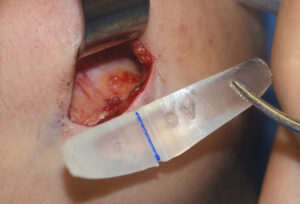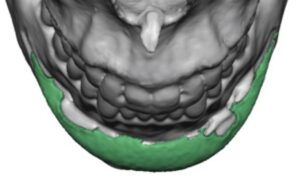One of the most common discussed effects associated with chin implants is bone resorption. This has been talked about for decades and patients and doctors talk about it like it is a progressive ongoing phenomenon that has pathologic and negative clinical effects.

In the September 2020 issue of the American Journal of Cosmetic Surgery an article on this topic was published entitled ‘Bone Remodeling Under Screw-Fixed Chin Implants in Patients With Microgenia: A Cross-Sectional Study’. In a study of fifty one (51) microgenia patients (17 with implants = Group A, 34 without implants = Group B) over a 15 year period, cone-beam computed tomography was used to evaluate bone erosion in different areas of the chin.
Bone resorption was higher in group A than in group B (mean ± SD: 0.98 ± 0.63 mm vs 0.03 ± 0.12 mm; P < .0001). Symphyseal buccal cortical bone in group A was thinner (1.66 ± 0.34 mm) than it was in group B (2.07 ± 0.45 mm), P < .001. Group A showed appositional bone growth and no cortical bone perforation. The mean of the amount of bone resorption of chin implant patients compared with that of those without implants was, on average, 0.99 mm greater. Although statistically significant differences in bone resorption were observed between groups, these differences were not clinically significant. Thinning of symphyseal buccal cortical bone without perforation and appositional bone growth occurred in chin implant patients, indicating an adaptive bone remodeling process. They concluded that bone that is in contact with chin implants remodels and remains stable throughout the years, instead of undergoing progressive resorption.

Dr. Barry Eppley
Indianapolis, Indiana



